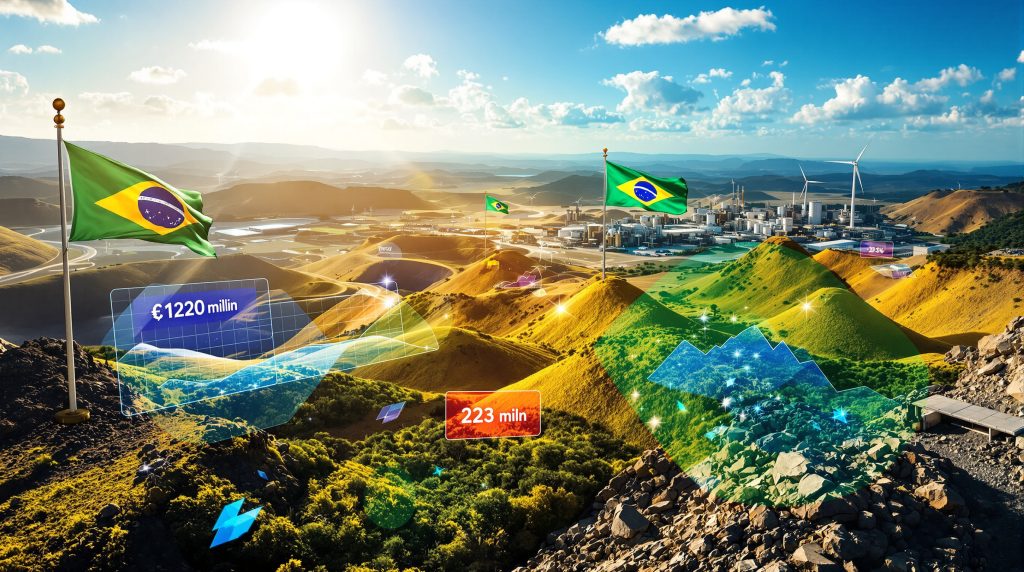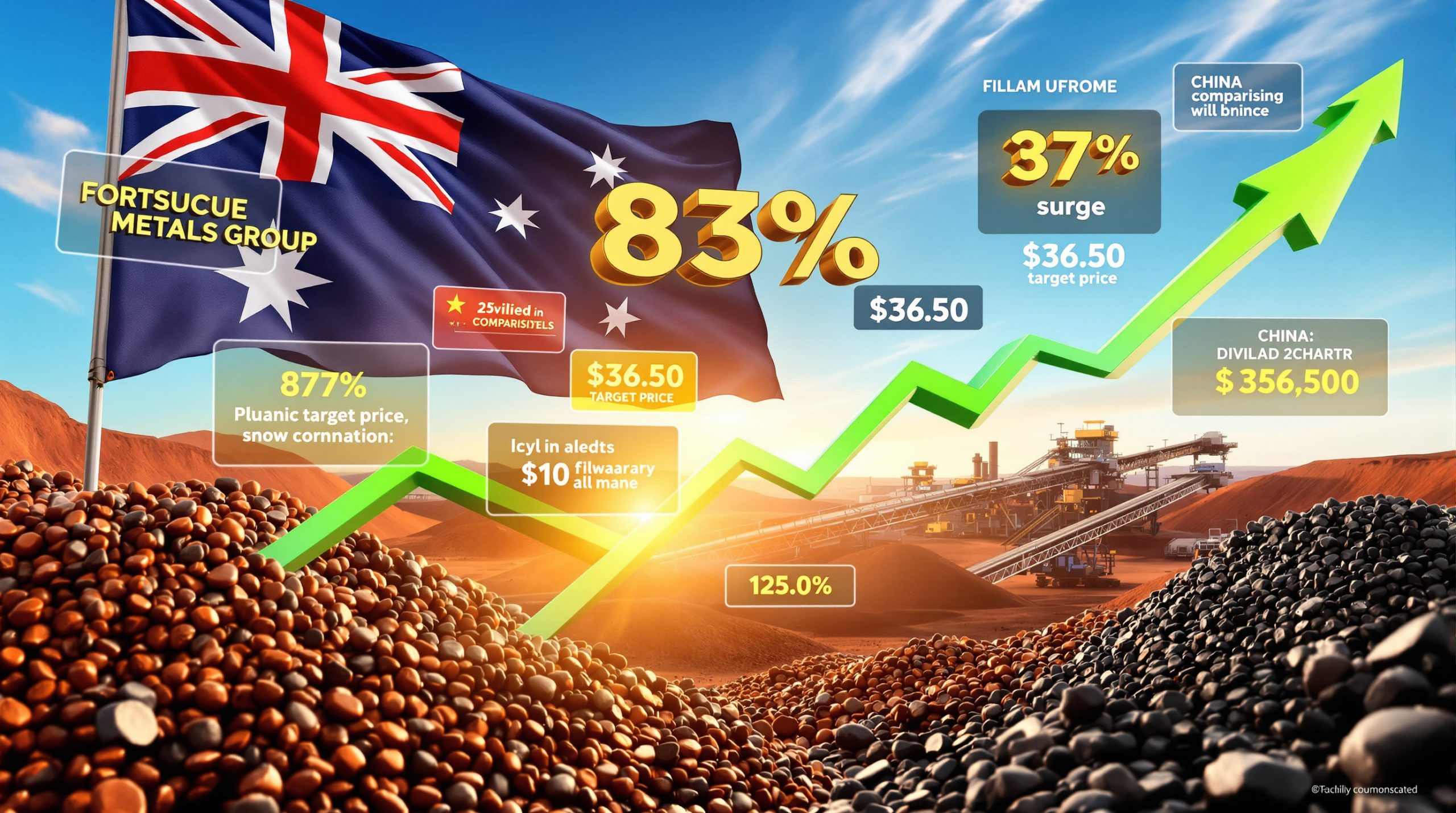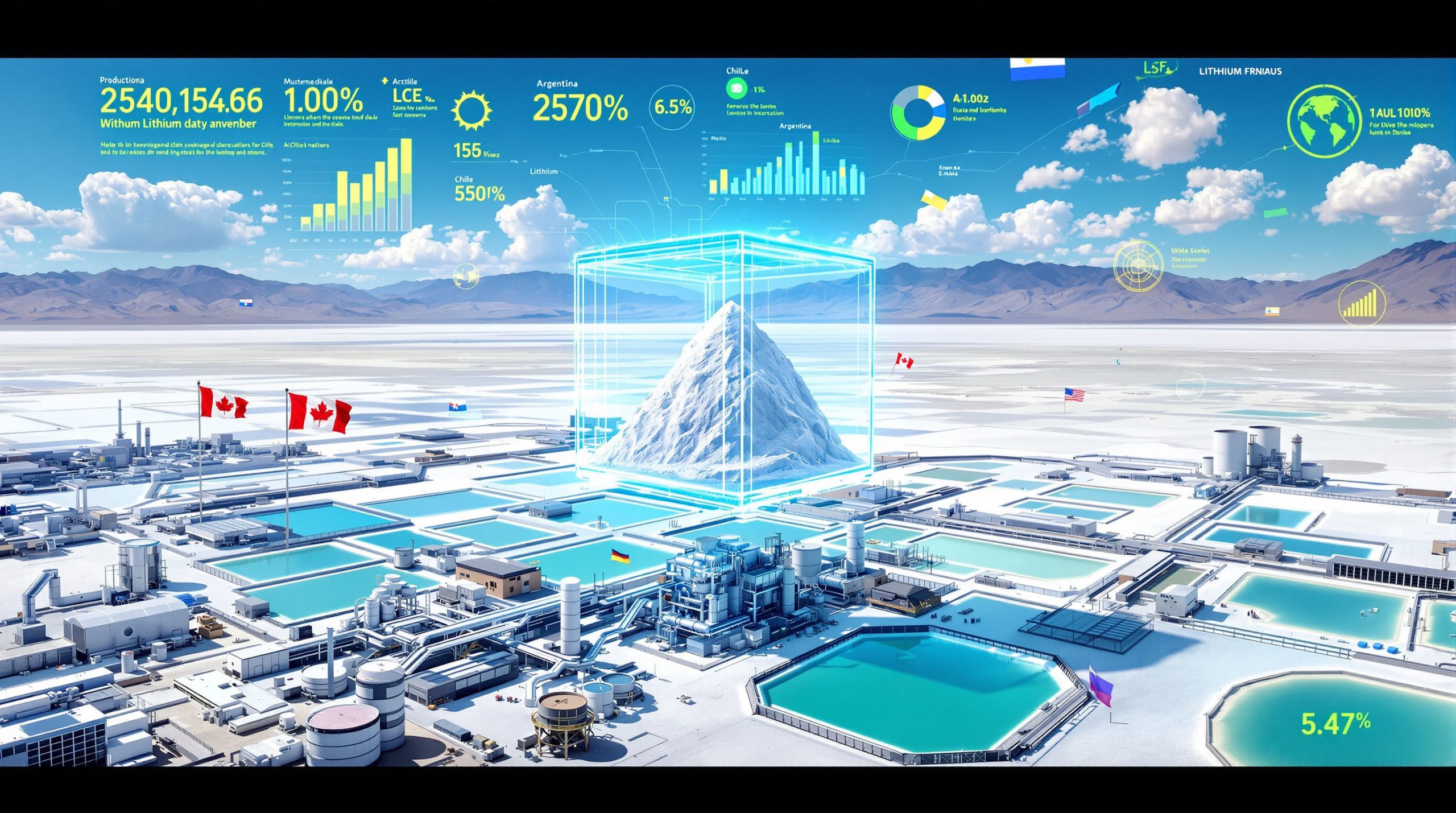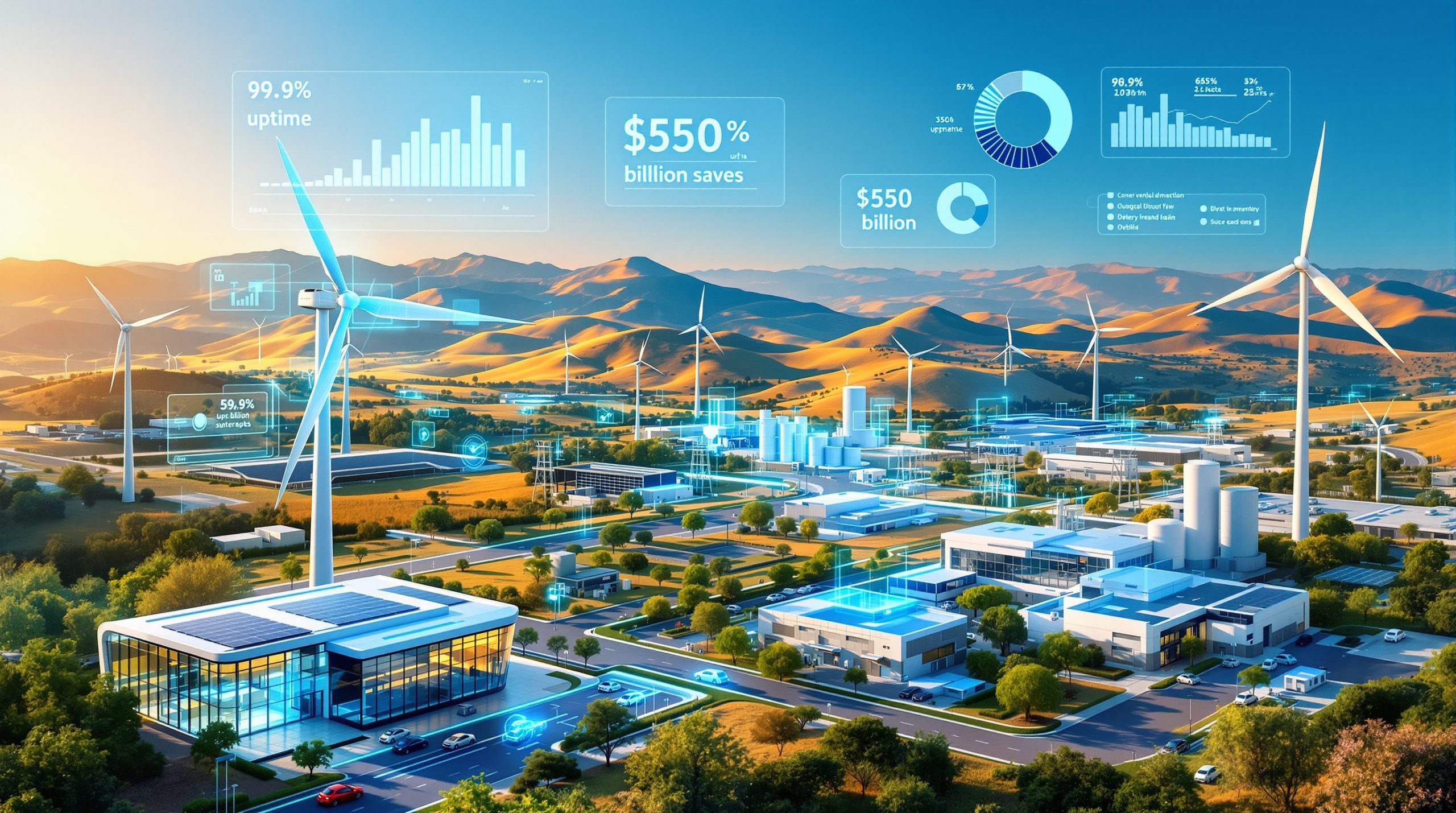Why Brazilian Rare Earth Mining is Drawing Unprecedented Global Investment
Brazil's emergence as a critical player in the global rare earth sector represents a fundamental shift in mining investment patterns. The country holds approximately 17% of the world's rare earth reserves distribution, positioning it as the second-largest repository of these critical materials after China. This substantial resource base, combined with growing Western demand for supply chain diversification, has created compelling investment opportunities that are attracting significant capital flows.
The strategic importance of Brazilian rare earth development cannot be overstated. With China controlling roughly 70% of global rare earth mining production and 85-90% of processing capacity, technology manufacturers and governments worldwide are actively seeking alternative sources. Brazil's vast mineral endowments offer a pathway toward supply chain resilience for industries dependent on these critical materials.
Recent geological assessments have revealed that Brazil's rare earth deposits contain favourable mineralogy for economic extraction. Furthermore, many projects are located near existing industrial infrastructure. This proximity to established transportation networks, reliable power supplies, and skilled workforces reduces the capital intensity typically associated with greenfield rare earth developments.
BRE Raises $78M for Rare Earth Projects in Brazil
BRE raises $78m for rare earth projects in Brazil through a successful capital placement that demonstrates robust institutional confidence. Brazilian Rare Earths secured A$120 million (approximately $78 million USD) through a strategic institutional placement, demonstrating robust investor appetite for Brazilian rare earth exposure. The company issued 25.6 million new shares at A$4.68 per share, representing a modest 6.4% discount to the recent closing price.
Key Financial Metrics:
• Share price: A$4.68 per share
• Total capital raised: A$120 million
• Shares issued: 25.6 million new ordinary shares
• Discount strategy: Zero discount to five-day VWAP
• Market reception: Strong institutional demand indicating confidence
The placement structure utilised Petra Capital as sole bookrunner with Canaccord Genuity serving as joint lead manager. This sophisticated approach suggests the involvement of institutional investors rather than retail participation. Consequently, this indicates professional investment community confidence in Brazil's rare earth potential.
This funding round builds upon BRE's previous A$80 million raise in 2024, bringing total recent capital mobilisation to A$200 million over two years. The escalating funding amounts reflect advancing project development stages and growing investor recognition of Brazilian rare earth opportunities.
Strategic Partnerships Accelerating Development Timelines
BRE's collaboration with Carester, a specialised rare earth processing company, establishes a comprehensive value chain approach extending beyond traditional mining operations. This partnership encompasses both technical integration and long-term commercial arrangements designed to maximise project returns.
Technical Integration Components:
• Engineering services for integrated separation refinery development
• Heavy rare earth feedstock provision arrangements
• Ten-year binding supply agreement for critical elements
• Access to Carester's specialised processing expertise
The strategic location at Camaçari Petrochemical Complex in Bahia provides significant operational advantages. This established industrial hub hosts over 90 companies and features existing infrastructure for chemical processing. As a result, it reduces capital requirements and development timelines compared to greenfield locations.
The partnership extends internationally through Carester's Caremag facility in France, which specialises in separating high-value dysprosium and terbium oxides. This connection provides BRE with established pathways to European markets and proven processing capabilities for premium rare earth products.
Brazil's Geological Advantages Create Investment Appeal
Brazilian rare earth deposits exhibit several characteristics that distinguish them from competitors in the global mining landscape. The country's geological formations contain diverse rare earth element profiles, including both light and heavy rare earth concentrations that command different market premiums.
The proximity of many Brazilian projects to existing infrastructure represents a significant cost advantage. Unlike remote deposits requiring extensive infrastructure development, Brazilian rare earth projects often benefit from established transportation networks. In addition, they have access to power supplies and industrial complexes developed for other mining and petrochemical operations.
Operational Benefits Include:
• Access to existing transportation networks
• Reliable power supply infrastructure
• Skilled workforce availability in established mining regions
• Proximity to port facilities for export logistics
Environmental permitting processes, while comprehensive, follow established frameworks that provide regulatory clarity for investors. Brazil's mining sector has developed sophisticated approaches to environmental management and community engagement that support project advancement.
Funding Timeline Demonstrates Accelerating Development
BRE raises $78m for rare earth projects in Brazil as part of an accelerating investment trajectory that illustrates the evolving investment landscape. The progression from A$80 million in 2024 to A$120 million in 2025 reflects both project advancement and increasing investor confidence.
| Funding Round | Amount (AUD) | Primary Purpose | Year |
|---|---|---|---|
| Previous | $80 million | Exploration & development | 2024 |
| Current | $120 million | Fast-track development & refinery | 2025 |
| Total | $200 million | Comprehensive project advancement | 2024-2025 |
This funding progression indicates sophisticated capital allocation aligned with project development milestones. The increasing amounts suggest that initial exploration and development activities have provided sufficient confidence to warrant larger investments in advanced development phases.
The use of proceeds focuses on fast-tracking high-grade rare earth project development and advancing the integrated separation refinery at Camaçari. This dual approach of resource development and processing capability represents a vertically integrated strategy designed to capture maximum value from Brazilian rare earth resources.
Target Products Address Critical Market Needs
BRE's production strategy targets high-value rare earth elements essential for modern technology applications. The planned product mix includes both light and heavy rare earth elements, with particular emphasis on materials facing supply constraints outside Chinese production.
Primary Product Portfolio:
• Neodymium oxide for permanent magnet applications
• Praseodymium oxide for industrial and automotive uses
• Heavy rare earth concentrate for specialised applications
• Separated dysprosium oxides for high-temperature magnets
• Separated terbium oxides for green technology applications
• Uranium as secondary product from processing operations
The inclusion of separated heavy rare earth oxides represents a significant value proposition. Dysprosium and terbium command premium pricing, with dysprosium oxide averaging approximately $280-350 per kilogram and terbium oxide reaching $1,200-1,400 per kilogram in 2023. This compares to light rare earth elements priced at $1-10 per kilogram.
These elements are critical for high-performance permanent magnets used in electric vehicle motors and wind turbine generators. The addition of dysprosium to neodymium-iron-boron magnets enhances thermal stability and coercivity, enabling operation at temperatures exceeding 200°C as required for automotive and industrial applications.
Heavy Rare Earths Command Premium Valuations
Heavy rare earth elements represent the most strategically valuable segment of the rare earth market due to their critical applications and highly concentrated supply chains. China currently produces approximately 98% of global heavy rare earth supply, primarily from ionic clay deposits in southern China. This creates significant supply vulnerability for Western technology manufacturers.
"The concentration of heavy rare earth supply creates substantial pricing power for producers outside Chinese control, with dysprosium and terbium essential for advanced permanent magnet applications in clean energy technologies."
Price Differential Analysis (2023 averages):
• Light rare earth oxides (lanthanum, cerium): $1-10/kg
• Medium rare earths (neodymium, praseodymium): $60-75/kg
• Heavy rare earths (dysprosium): $280-350/kg
• Heavy rare earths (terbium): $1,200-1,400/kg
The International Energy Agency has identified heavy rare earth elements as facing the most severe supply concentration risks in the entire critical minerals category. Their analysis indicates that dysprosium and terbium supply chains are almost entirely dependent on Chinese production. Furthermore, this creates significant vulnerability for critical minerals energy transition manufacturing.
Research in materials science confirms that dysprosium additions to neodymium-iron-boron magnets, typically 2-8% by weight, increase coercivity and enable operation at elevated temperatures essential for automotive and wind turbine applications. This technical requirement creates inelastic demand for dysprosium despite its premium pricing.
Challenging Chinese Market Dominance Through Supply Diversification
China's control over global rare earth supply chains extends beyond mining to encompass processing, separation, and downstream manufacturing. This vertical integration has created dependencies that Western governments and corporations are actively seeking to reduce through alternative supply development.
Chinese Market Control Structure:
• Mining production: Approximately 70% of global supply
• Processing and separation: 85-90% of global capacity
• Permanent magnet manufacturing: ~90% of global production
• Export licensing: Maintained despite WTO dispute resolution
Historical precedent demonstrates China's willingness to restrict rare earth exports for geopolitical objectives. Export quotas implemented from 2010-2015 caused significant price spikes, with neodymium-praseodymium oxide reaching $300 per kilogram in 2011. This compares to $60-70 per kilogram in 2023, highlighting the potential for US–China trade war effects on rare earth markets.
The U.S. Department of Energy's 2023 Critical Materials Assessment identifies rare earth elements as having high supply risk. This is due to foreign sources that are concentrated, have low production diversification, face production growth limitations, and remain susceptible to global supply disruptions.
Brazil's Strategic Advantages
Brazil's development offers strategic advantages for supply diversification including lower labour costs than developed markets, abundant natural resources, and established mining expertise. The country's geographic position also provides advantageous shipping routes to North American and European markets compared to existing non-Chinese suppliers in Australia and Malaysia.
Environmental and Social Considerations Shape Development Approaches
Brazilian rare earth projects must navigate complex environmental and social landscapes that influence project timelines, costs, and community acceptance. The country's environmental licencing framework, administered by IBAMA (Brazilian Institute of Environment and Renewable Natural Resources), requires comprehensive impact assessments and community consultation processes.
Environmental Management Challenges:
• Operations near conservation areas requiring careful management
• Water resource protection in sensitive ecosystems
• Waste management for processing operations generating significant tailings
• Air quality management during mining and processing activities
Research indicates that rare earth mining and processing generates substantial waste streams, with approximately 2,000 tons of tailings produced for every ton of rare earth oxide extracted. These tailings contain residual acids, heavy metals, and radioactive materials including thorium and uranium, requiring sophisticated management approaches.
Social Considerations Include:
• Impact assessment for rural communities and traditional settlements
• Employment opportunities for local populations through skills development
• Infrastructure development benefits for regional economic growth
• Revenue sharing arrangements with local and state governments
Life cycle assessments published in environmental science journals indicate that rare earth oxide production has significant environmental impacts. Heavy rare earth separation is particularly energy-intensive, requiring approximately 15-20 kilowatt-hours per kilogram of separated oxide.
Camaçari Refinery Represents Value Chain Integration
The proposed integrated separation refinery at Camaçari Petrochemical Complex represents a strategic shift toward value-added processing rather than traditional concentrate export models. This approach captures significantly higher margins while reducing Brazil's dependence on foreign processing capabilities.
Refinery Strategic Advantages:
• Domestic processing capability reducing export dependence
• Higher-margin finished products instead of concentrates
• Technical expertise development within Brazil
• Strategic positioning for South American market supply
Industry analysis suggests that rare earth separation and refining adds 300-500% to the value of rare earth concentrates, depending on specific elements and purity levels achieved. This value addition represents significant economic benefits for both companies and the Brazilian economy.
The refinery will employ solvent extraction technology, the industry standard for rare earth separation. Modern facilities typically require 30-100 extraction stages to achieve high purity separation of chemically similar elements. They use mixer-settler or column extraction systems for optimal efficiency.
Location at the Camaçari complex provides access to established chemical processing infrastructure, skilled technical workforce, and proximity to port facilities for product export. The complex hosts over 90 companies engaged in petrochemical and chemical processing, creating synergies for rare earth processing operations.
Global Supply Chain Transformation Implications
BRE raises $78m for rare earth projects in Brazil as part of broader restructuring of global rare earth supply chains. The implications extend beyond Brazil to affect international technology companies, investment markets, and energy security considerations.
Technology Company Benefits:
• Diversified supplier base reducing geopolitical supply risks
• Potential cost stability through increased competition
• Enhanced supply security for critical technology applications
• Reduced vulnerability to export restrictions or trade disputes
The International Energy Agency projects that demand for rare earth elements in clean energy technologies will increase 3-7 times by 2040 under sustainable development scenarios. This growth is driven primarily by electric vehicle deployment and wind turbine installations. Both require high-performance permanent magnets.
A typical electric vehicle uses approximately 1-2 kilograms of rare earth permanent magnets in drive motors. Each kilogram of neodymium-iron-boron magnet requires approximately 0.3-0.35 kilograms of neodymium-praseodymium oxide. This creates substantial demand growth tied directly to electric vehicle adoption rates.
Investment Market Implications
The success of this rare earth breakthrough demonstrates several key market trends:
• Growing opportunities in non-Chinese rare earth projects
• Increased focus on integrated processing capabilities
• Premium valuations for strategic mineral assets
• ESG considerations favouring responsible mining practices
Future Capital Requirements and Development Timeline
Based on typical rare earth project development patterns, BRE raises $78m for rare earth projects in Brazil likely represents an intermediate stage in total capital requirements. Additional funding phases may include pre-production infrastructure completion, processing facility construction, and working capital for initial operations.
Projected Development Phases:
• 2025-2026: Infrastructure development and detailed engineering
• 2026-2027: Processing facility construction and commissioning
• 2027-2028: Production ramp-up and operational optimisation
• 2028+: Full commercial operations and potential expansion
Capital requirements for rare earth projects typically escalate significantly during construction phases, with processing facilities representing major cost components. Modern rare earth separation plants can require $200-500 million in capital investment depending on capacity and product specifications.
Working capital requirements for rare earth operations are substantial due to long processing cycles, inventory requirements, and customer qualification periods. Initial production phases often require 6-12 months of operating expenses as working capital during market entry and customer certification processes.
Investment Risk Considerations for Stakeholders
Despite favourable fundamentals, Brazilian rare earth investments carry inherent risks that stakeholders must carefully evaluate. These risks span technical, market, regulatory, and operational categories that can significantly impact project returns.
Technical Risk Factors:
• Processing complexity and metallurgical challenges
• Environmental compliance and permitting delays
• Infrastructure development cost overruns
• Technology performance and efficiency achievements
Market Risk Considerations:
• Rare earth price volatility due to supply-demand imbalances
• Chinese market response to increased competition
• Technology substitution reducing demand for specific elements
• Economic downturns affecting end-market demand
Regulatory and Operational Risks:
• Environmental approval processes and compliance costs
• Mining licence maintenance and renewal requirements
• Export regulation changes affecting market access
• Currency fluctuations impacting project economics
Rare earth markets have historically exhibited significant price volatility, with major elements experiencing 300-500% price swings over multi-year periods. This volatility reflects the concentrated nature of supply sources, complex demand patterns, and limited market liquidity for many elements.
"Investment Disclaimer: Rare earth investments involve substantial technical, market, and regulatory risks that can materially affect returns. Commodity price volatility, regulatory changes, and technical challenges may impact project development timelines and economics. Investors should conduct thorough due diligence and consider professional advice before making investment decisions in rare earth mining projects."
The development of Brazilian rare earth capabilities represents a significant opportunity for supply chain diversification while carrying inherent risks associated with complex mining and processing operations. Success will depend on effective execution of technical, commercial, and regulatory milestones across multiple development phases.
Ready to Invest in the Next Major Mineral Discovery?
Discovery Alert instantly alerts investors to significant ASX mineral discoveries using its proprietary Discovery IQ model, turning complex mineral data into actionable insights. Begin your 30-day free trial today and position yourself ahead of the market with real-time notifications on breakthrough discoveries that could generate substantial returns.




